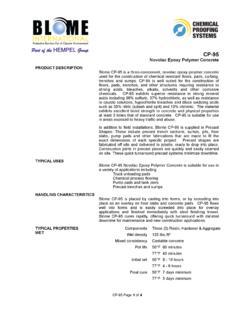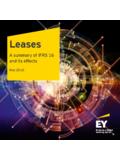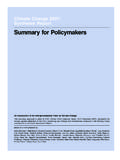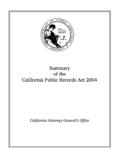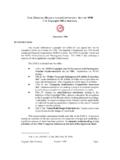Transcription of SUMMARY OF Critical Regulations - CCSI
1 SUMMARY OF. Critical Regulations . Stormwater Management Regulations (National Pollutant Discharge Elimination System or "NPDES ). 40 CFR . Spill Prevention, Control, and Countermeasures Rule (SPCC). 40 CFR 112.. EPA Container Storage Regulation 40 CFR Stormwater Management Regulations A. SUMMARY : The National Pollutant Discharge Elimination System (NPDES). permit program controls water pollution by regulating point sources and non-point sources that discharge pollutants into waters of the United States. These Regulations are a key component of EPA's Clean Water Act. ULTRA-DRAINGUARDTM. The overriding goal is to protect the quality of waterways by reducing the discharge of sediment, oil and chemicals into storm drains, surface water and groundwater. B. WHO MUST COMPLY? Three (3) main categories must comply with the NPDES Regulations : 1.
2 Industrial Sites a diverse range of 450 Standard Industrial Classification Codes (SIC) are regulated. Visit for a detailed listing. 2. Construction Activities Phase II of the Regulations went into effect in March 2003 and requires that construction sites on one (1) acre or more (commercial or residential) must comply. ULTRA-DEWATERING BAGTM. 3. Municipalities Phase II requires that all municipalities with a population of 10,000 or more must comply. Regulated properties include city-owned facilities ( maintenance yards, water treatment plants, refuse dumps, city parks, parking garages, marinas, etc.) and city-supervised construction activities ( road work, water main repairs, landscape development and maintenance, etc.). C. WHAT ACTIONS ARE NECESSARY FOR COMPLIANCE? A Stormwater Pollution Prevention Plan (SWPPP) must be filed with the state or regional EPA to receive a stormwater permit.
3 The Stormwater Plan requires the use of "Best Management Practices". ULTRA-SPILLBERMTM. (BMP's) to control stormwater runoff during construction activity or as part of a long term maintenance plan. BMP's that are specified in the Plan must reduce the discharge of pollutants to the maximum extent practicable (MEP), protect water quality and satisfy the appropriate water quality requirements of the Clean Water Act. Visit for more information on Stormwater Regulations . ULTRA-CONTAINMENT SUMPSTM. Spill Prevention, Control and Countermeasures Rule A. SUMMARY : Under authority of the Clean Water Act, EPA published its Oil Pollution Prevention Rule (40 CFR 112) that took effect originally on January 10, 1974. The rule was revised and strengthened on July 17, 2002. Facilities subject to the Rule must prepare and implement a plan to prevent any discharge of oil into or upon navigable waters of the (including groundwater) or adjoining shorelines.
4 This written plan is ULTRA-CONTAINMENT BERMSTM. called an SPCC Plan. The SPCC Plan must address: (a) operating procedures the facility implements to prevent oil spills; (b) control measures installed to prevent oil from entering navigable waters; (c) countermeasures to contain, clean up and mitigate the effects of oil spills. Deadlines for compliance: (a) Facilities must have a written SPCC Plan in place by February 17, 2006; (b) Plans must be implemented as soon as possible, but no later than August 18, 2006. B. WHO MUST COMPLY? Facilities with combined (indoor and outdoor), above-ground oil ULTRA-DRAINSEALSTM. storage capacity (including gasoline, diesel, animal oils and fats, vegetable oils, grease, synthetic oils, mineral oils and oil mixed with other wastes) greater than 1,320 gallons or a completely buried storage capacity greater than 42,000 gallons.
5 To calculate oil storage "capacity", all containers with a capacity of 55. gallons or more are included. Overall, the Rule applies to owners or operators of facilities that drill, produce, gather, store, use, process, refine, transfer, distribute or consume oil or oil products. C. WHAT ACTIONS ARE NECESSARY FOR COMPLIANCE? All qualifying drums and tanks must have secondary containment ULTRA-HARDTOPSTM. and be included in the written Plan. Secondary containment is also required for loading and unloading areas for tanker trucks and railcars. Secondary containment must be equal to the largest vessel. In the case of a railcar, the containment area must provide a means to divert a significant spill to a retention pond, oil/water separator, etc. The Plan must include a facility diagram, and must mark the location and contents of each container.
6 Secondary containment must be constructed so that any discharge from a primary containment system ( drum, tank or pipe) will not escape before cleanup occurs. Visit to review the SPCC Regulation in its entirety. ULTRA-TRACKPANSTM. EPA Container Storage Regulation A. SUMMARY : The regulation addresses containers (primarily tanks and drums) that contain free liquids that are considered to be hazardous. Secondary containment units are required that underlay the containers and are free of cracks or gaps; they must be "sufficiently impervious to contain leaks, spills and accumulated precipitation". The base of the containment unit must be sloped or designed to ULTRA-IBC SPILLPALLETSTM. drain and remove liquids that result from leaks, spills or precipitation, unless the containers are elevated or otherwise protected from contact with accumulated liquids.
7 The containment unit must have sufficient capacity to contain 10%. of the total volume of all containers in the grouping, OR the volume of the single largest container in the grouping, whichever is greater. B. WHO MUST COMPLY? The federal EPA Regulations require Treatment, Storage and Disposal (TSD) facilities to comply with these standards and recommend that ULTRA-SPILLDECKSTM. any company that stores containers of oil and hazardous wastes follow the Regulations as well. Many state and local levels enforce these Regulations on a wide range of facilities and industries that store hazardous materials and/or wastes in drums and tanks. In many cases, containers stored both indoors and outdoors are covered by the regulation. C. WHAT ACTIONS ARE NECESSARY FOR COMPLIANCE? Each facility should survey its entire site, both indoors and outdoors.
8 An onsite Environmental Manager or environmental consultant is typically qualified to perform the survey. All containers used to store hazardous liquids should be reviewed to ULTRA-SPILLPALLETSTM. determine if sufficient containment measures have been taken. A containment system that has been designed to meet the criteria outlined in 40 CFR should be purchased or constructed for all containers that are not in compliance. UltraTech International, Inc. 11542 Davis Creek Court Jacksonville, FL 32256 USA. (904) 292-1611. Toll Free 1-877-ULTRATECH. (1-877-858-7283). Find 40 CFR and other important Regulations at Fax (904) 292-1325. E-mail.
